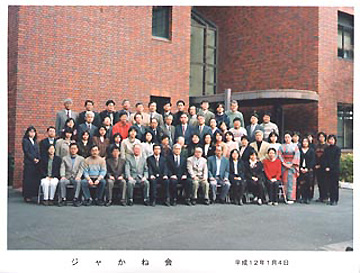| 5. An Illustrated Guide to Insects The drawing-up of “an illustrated guide to the insects” of the staff of ASAFAS showing which are ants and which are grasshoppers, I suppose, be left to any interested person who might use as clues the columns that introduce members of staff on our home page. How about the students?My knowledge of the entire student body is too limited for purposes of compiling “an illustrated insect guide” to students. However, it is nevertheless possible to indicate the variety of the research interests and chosen geographical areas of the students. The students who entered the Graduate School in 2000 were required to present brief reports on the themes that they wanted to study in the Graduate School as a preliminary assignment prior to the entrance ceremony. I give several of these themes, as follows:
Among these students, there are those who have already departed in directions different from the themes described in the above list. No matter how the themes have changed, the fact remains that the variety needed for compiling “an illustrated guide to insects,” is reflected in the breadth of the academic interests of the students.
KATO Tsuyoshi |
